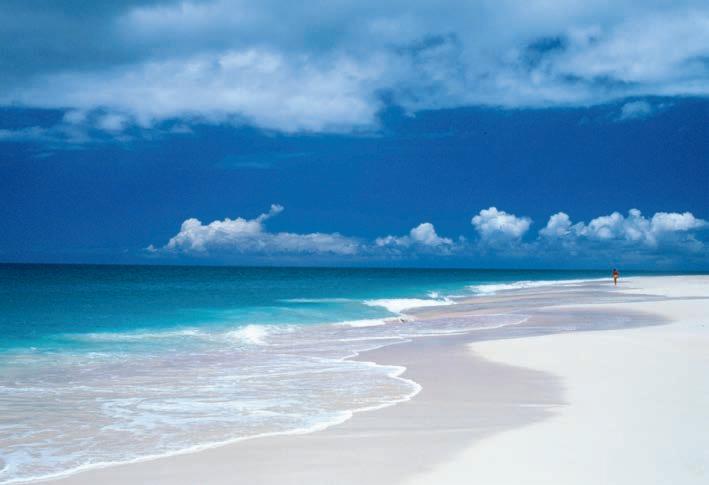
3 minute read
Antigua & Barbuda: How One Of The World’s Bluest Countries Became One Of Its Greenest
Antigua & Barbuda: How One Of The World’s Bluest Countries Became One Of Its Greenest
In the heart of the Caribbean’s Leeward Islands chain, the dual-island nation of Antigua & Barbuda charms travellers seeking white sands, welcoming vibes, and breezy luxury. With a total area of only 440 km—a third of which is pristine Caribbean coastline—the popularity of Antigua & Barbuda is a product of a dynamic tourism offering that leverages the unique character of both islands. Antigua is an energetic romance haven known for its historic colonial towns, calm azure waves, and lovely coastal resorts. Quieter Barbuda is a time capsule from the Caribbean of centuries past, its unspoiled beauty captured in teeming reefs, hidden caves, and vibrant mangroves.
While owning 365 of the best beaches in the Caribbean has certainly helped this tropical duo win hearts and minds, it is the destination’s regional leadership in climate change and conservation that deserves special applause. With a committed, all-handson-deck approach drawing in partners from the government, tourism industry, and local community, Antigua & Barbuda has embraced the green movement in a way few other destinations have. For Antigua & Barbuda, climate change cannot be left to future generations: the struggle against rising sea levels and environmental degradation is a most present battle, but one that the destination appears to be winning.
In 2016, Antigua & Barbuda became the first nation in the Caribbean to ban single-use plastics in a bid to protect the health and diversity of its aquatic habitats. The destination has only intensified its commitment to ocean stewardship in recent years, having been recognized as the single smallest emitter of ocean plastics out of 180 other countries on the Environmental Performance Index (EPI). Just this year, Antigua & Barbuda kicked off a reef restoration program known as ‘Oceanshot,’ a scientific project that combines manmade structures and cultivated coral to reinforce natural reefs, create erosion barriers, and provide habitats for endangered sea creatures. Antigua & Barbuda is officially the first country in which this solution has been implemented, placing the two islands once again on the cutting edge of conservation.
Supplementing these topdown initiatives is a series of community-driven organizations aimed at making a difference for the destination’s finned and feathered inhabitants. From the tiniest toads to the massive Giant Aldabra Tortoises that make their home in a sanctuary on nearby Laviscount Island, Antigua’s Environmental Awareness Group (EAG) fights tirelessly for the destination’s endemic species, channelling proceeds from sustainable tours into outreach campaigns. The establishment of a sea turtle sanctuary on Galley Bay Resort’s stunning beach is a notable triumph and one that allows visitors to get directly involved in helping hatchlings reach the water. On Barbuda—home to the largest colony of red-throated frigatebirds in the western hemisphere—the EAG has been a staunch defender of Codrington Lagoon, ensuring that guests and locals alike will be able to enjoy the spirited mating dances of the sanctuary’s avian inhabitants for generations to come.
With 2023 marking a year of wellness-focused tourism initiatives, travellers seeking superlative spa treatments and zen relaxation will find a whole host of new reasons to visit Antigua & Barbuda. Yet, the destination’s commendable dedication to the wellness of its aquatic habitats remains enduring and timeless, establishing Antigua & Barbuda as a truly green oasis amidst a sea of endless blue.
The beach is just the beginning.
Learn more about Antigua & Barbuda at visitantiguabarbuda.com











